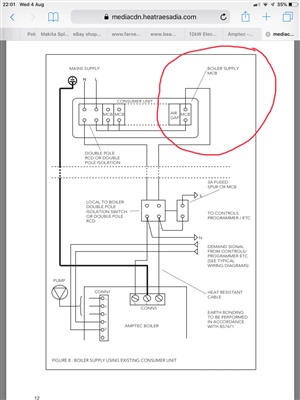Helllllooooo,
I have been asked to install new consumer unit for a couple as they are having a company supply and install a new 12kW Heatrae Sadia electric “boiler”. Has anyone any comments about such a beast. Any experiences of these please? Rather than supply it from a new consumer unit by a B50 M.C.B. I have considered supplying it from a dedicated switch fuse with a suitable H.R.C. cartridge fuse.
Thoughts anyone?
The makes are based in Norwich. Well I have only just learned that. I have no connection with Heatrae Sadia.
Z.





